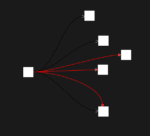
by tyler garrett | Jun 12, 2025 | Data Processing
Imagine a world where your organization’s most sensitive data could remain encrypted at all times, yet still be actively computed, analyzed, and transformed. This is the bold promise homomorphic computing offers — a future-proof approach that allows insight generation on encrypted datasets without ever exposing plaintext information. For companies navigating increasingly stringent data privacy regulations and security demands, integrating homomorphic computing techniques can set them apart as leaders in innovation and stewardship. Let’s dive deeper into how this powerful innovation functions, why it’s making waves, and what your organization needs to understand about efficiently crunching encrypted bits.
Understanding the Basics: What is Homomorphic Computing?
Homomorphic computing, or homomorphic encryption, refers to methods that enable computation to occur directly on encrypted data, producing an encrypted result that remains confidential throughout the entire calculation lifecycle. Unlike traditional encryption techniques, where you must decrypt your data first to perform analytical processing—a step that inherently exposes sensitive information—homomorphic encryption allows these operations without ever compromising privacy.
Initially explored in academic realms to address sensitive data handling, homomorphic encryption is now making its way into practical applications across industries from finance and healthcare to government and retail. Organizations adopting these methodologies reap benefits in enhanced security, regulatory compliance, and data privacy. For enterprises consistently concerned with managing their data observability strategies efficiently, homomorphic encryption provides an additional layer of protection and reassurance.
The core advantage is clear: encrypted data remains protected at all times, even while undergoing complex computations. Businesses can leverage external services or cloud providers without ever needing to share sensitive plain-text data. As data becomes a strategic asset, secure analytics capabilities such as homomorphic computing promise immense potential in harnessing data without sacrificing privacy.
The Nuts and Bolts of How Homomorphic Encryption Works
So how does homomorphic computing enable data processing without decryption? At its core, homomorphic encryption utilizes advanced mathematical constructs that allow computational operations to behave transparently across encrypted values. Data encrypted with this method remain in ciphertext, but encoding algorithms are carefully designed to replicate SSL-encrypted computations.
There are two primary types of homomorphic encryption: partial and fully. Partial homomorphic encryption (PHE) allows limited kinds of computation—often specific authoritative functions like addition or multiplication. In contrast, fully homomorphic encryption (FHE) enables an extensive variety of calculations, making it suited for varied and powerful data analytics workloads comfortably in the encrypted space.
Understanding the distinction between partial and full encryption types becomes vital when considering solutions tailored to your business needs. For example, financial institutions regularly running complex queries and transaction processes might benefit from the flexibility of fully homomorphic approaches, whereas businesses running limited standardized reports might find partial homomorphic encryption sufficient. Like choosing between a custom-built vs off-the-shelf technology solution, the right choice depends strongly on your use case and requirements.
Why Homomorphic Computing Matters in Today’s Tech Landscape
We live in an era where data privacy and security breaches regularly dominate headlines. Data leaks cause significant national security and reputational damages, bring heavy financial risks, and erode customer trust overnight. Thus, the increasing importance of embracing homomorphic computing is hugely justified, especially from a risk management and regulatory compliance angle.
Organizations face constant pressures from GDPR, HIPAA, and other privacy regulations. Homomorphic encryption offers a promising escape from the complexity and risks involved in securing personal data by providing computations directly on encrypted datasets. Not only does this simplify regulatory adherence—it establishes a trustworthy foundation for innovation and expansion of analytics capabilities.
In today’s competitive landscape, companies must rapidly adopt secure data strategies or risk falling behind those leveraging analytics more efficiently. Additionally, by embedding homomorphic computing proactively into your solutions landscape, businesses can confidently embrace modern analytics practices such as cloud analytics, integration of third-party APIs, and external dataset enrichment without apprehension about risking privacy breaches. Whether you’re improving stored procedure optimizations for better data transformations in Snowflake or challenging contemporary ETL processes, homomorphic computing becomes a strategic enabler.
Real-World Applications: Where Homomorphic Computing Thrives
Let’s bring homomorphic encryption down from theory to practice. There are several emerging use-cases where applying these principles provides substantial value.
In healthcare, doctors can securely aggregate encrypted patient records from different providers to develop machine learning models for personalized medical treatments—all without compromising patient data confidentiality. Financial institutions likewise benefit by running complex portfolio analyses or risk assessments on encrypted credit data, circumventing potential exposures and compliance violations.
Similarly, businesses leveraging managed service providers for data analytics—in particular, outsourcing sensitive data analysis tasks—can do so comfortably by leveraging homomorphic encryption, ensuring contracted analysts literally never have access to the underlying plaintext data. This drastically reduces risks commonly inherent in outsourcing sensitive tasks.
Even practical solutions such as securely sharing insights internally within organizations can leverage homomorphic processes. Consider developing machine learning models from encrypted customer transaction details, or safely discovering high-value insights from internal proprietary metrics. For real-time business decision making, where data pipelines must be rock-solid, companies can layer homomorphic computing techniques onto their existing testing frameworks such as data pipeline canary deployments for production testing, further securing critical analytics workflows.
Evaluating Technical Challenges and Resource Needs
While benefits are plenty, homomorphic computing doesn’t come without specific technical challenges. The most frequent issue leaders encounter when approaching homomorphic computing is balancing performance overhead with operational efficiency. Computations performed directly on encrypted data are often computationally intensive compared to their plaintext counterparts, reflecting drastically in latency and resource allocation overhead.
Given these computational demands, assessing infrastructure readiness is crucial. Optimal selection of tools and resources is a determining factor for successful outcomes. You’ll want exceptional database optimization practices, strategic indexing, or even leaning on partitioning and sharding techniques to alleviate query loads. Partnering with experts in MySQL infrastructure consulting can help strategically align your database architecture to support the unique compute requirements posed by homomorphic encryption.
Implementing rigorous workflows to prevent resource-heavy tasks from negatively impacting upstream or downstream tasks is vital. You may need to reevaluate long-running transaction management strategies in ETL workflows to deal effectively with additional operational layers homomorphic encryption introduces. Moreover, nurturing effective data exploration and discovery processes requires incorporating practices that can augment users’ ability in interpreting encrypted analytical results, directly tying back to concepts such as improving information scent while navigating encrypted analytics applications.
Making Strategic Moves: Integrating Homomorphic Computing into Your Organization
Integrating homomorphic computing is fundamentally strategic. Your team must first identify clear business and technical benefits, get stakeholder buy-in, and formulate a cohesive implementation plan. Start small, with focused use-cases or targeted proof-of-concepts that yield quick wins and demonstrate value.
Before you integrate this technique organization-wide, ensure there’s inherent alignment between analytics objectives, encryption strategies, computing resources, and risk management efforts. Your broader data landscape—from your data ingestion methodologies to your end-user analytics applications—must adapt systematically to securely empower homomorphic initiatives, enabling seamless transition to broader use cases over time.
Lastly, continuous education and training remain imperative. Ensure your technical and analytical personnel stay informed on emerging encryption techniques, computational advancements, and associated practices. Homomorphic computing is not merely a technology play—it’s a cultural shift, constantly evolving with insights, refining security frameworks, and adapting emerging practices for future-ready data intelligence systems leveraging utmost privacy.
Tags: Homomorphic Computing, Encrypted Data Analytics, Data Privacy, Data Security, Homomorphic Encryption, Innovation Strategy

by tyler garrett | Jun 12, 2025 | Data Processing
Imagine orchestrating the morning rush hour in a bustling city, each commuter representing a piece of data heading rapidly through interconnected streets, all converging towards well-defined destinations. Without careful planning and management, chaos reigns supreme. In the world of software architecture and data processing, fan-out/fan-in patterns offer systematic traffic control—splitting tasks into concurrent operations (fan-out) and subsequently consolidating those results into meaningful outputs (fan-in). Executed properly, this approach empowers your analytics pipelines to handle colossal volumes of data swiftly while maintaining computational efficiency. Let’s dive deeper into how fan-out/fan-in patterns strengthen analytics, protect pipelines from bottlenecks, and deliver insights faster without sacrificing clarity or stability.
Understanding Fan-Out and Fan-In in Modern Data Architectures
The crux of any high-performance data processing system lies in its ability to efficiently parallelize workloads, transforming complex, intensive tasks into manageable pieces spread across multiple resources. This is precisely the strength of the fan-out/fan-in approach. At the fan-out phase, tasks are segmented and dispatched simultaneously across parallel paths, dramatically increasing throughput and reducing the latency inherent in traditional sequential processing. Conversely, the fan-in step aggregates these dispersed process results, recombining multiple workstreams back into a single coherent outcome.
In practice, fan-out/fan-in implementations imply a robust orchestration capability, particularly suited to distributed systems, event-driven applications, and real-time analytics workloads. Ensuring data integrity, streamlining final interpretations, and carefully monitoring performance metrics are essential to avoid overwhelming system resources. A disciplined implementation leads to smoother operations, preventing backpressure bottlenecks from crippling downstream systems—an obstacle often faced in large-scale streaming data scenarios.
Moreover, this architectural choice doesn’t only leverage concurrent processing power but also introduces intelligent load-balancing strategies that optimize hardware resources and enhance computational agility. Implementing fan-out/fan-in thoughtfully helps organizations navigate volatile workloads and fluctuating data volumes with confidence and stability.
The Mechanics: How Fan-Out Enables Parallel Efficiency
At its most fundamental level, fan-out distributes work broadly. During this stage, the master algorithm assigns tasks to various computing resources simultaneously—effectively transforming a complex task from a sequential bottleneck into parallel subtasks. By designating specific subtasks to available computing nodes or serverless functions, fan-out architectures drastically reduce overall response times and empower systems to scale horizontally, accommodating a wide range of concurrent workloads effortlessly.
Empowering analytics functions through fan-out commonly involves segmentation tasks for processing expansive datasets or running machine learning models across distributed compute instances. For example, consider semantic embedding generation, an analytic process whose computational load can be partitioned into independent embedding tasks—each running concurrently, drastically speeding up semantic understanding for business intelligence insights.
However, unchecked parallelism risks creating more chaos than value. Therefore, developers and architects must carefully manage partitioned tasks’ granularity, ensuring each operation remains efficient. Intelligent monitoring and management tools ensure optimal resource allocations and peak parallel execution. Leveraging powerful cloud computing environments in conjunction with fan-out design allows analytics tasks to operate at breathtaking scales, empowering organizations to innovate faster and stay ahead of competition.
Consolidating Results with Fan-In: From Distributed Chaos to Unified Clarity
While fan-out capitalizes on parallelism, fan-in meticulously consolidates the independently generated results into meaningful aggregates. It’s in this crucial convergence phase that the output translates effectively into actionable business insights. For example, merging parallel analyses from separate market segments, consumer demographics, or data sources ensures a holistic and nuanced understanding that no singular analysis could replicate alone.
Strategically, fan-in bridges independent computations into actionable results through structured aggregation, reconciliation logic, correlation analysis, or more sophisticated business decision frameworks. In analytics workflows, this stage ensures data integrity—emphasizing the critical importance of appropriate data representation—to avoid skewed conclusions resulting from improper scaling or misaligned axes.
Careful orchestration during fan-in also mitigates potential resource contention and ensures that conclusions drawn from distributed workstreams are accurate and timely. This attention to detail pays dividends in reliability and trustworthiness—especially critical in strategic analytics outputs like executive dashboards. Accurate consolidations empower executives to confidently rely on real-time aggregated insights for business-critical decisions without fear of misleading representations or slow results delivery.
Best Practices for Managing Fan-Out and Fan-In Complexity
While fan-out/fan-in architecture promises unparalleled processing efficiency, its benefits are not without complexity. Gaining maximum value entails addressing these complexities proactively—with disciplined orchestration strategies, strategic partitioning, and robust result aggregation patterns. Architects must consider multiple factors, such as system resource calibration, messaging throughput management, and stateful versus stateless task executions. This meticulous planning not only prevents chaos but also boosts overall system reliability and data accuracy.
To ensure success, invest wisely in effective monitoring practices to guide workload assignments. Keep close tabs on task distribution granularity—larger tasks may simplify workflow management but may undermine parallel efficiency, while overly granular operations could introduce significant orchestrational overhead. Based on monitoring outcomes, utilize flexible cloud environments or targeted hourly expert consulting support to tackle nuanced challenges effectively and in real-time without committing long-term resources.
Furthermore, shared data definitions and standardized enterprise glossaries are critical for managing system technicalities at scale. Ensuring data consistency and precision through clear terminology reduces complexity dramatically. Establishing precise enterprise glossary standards for homonyms and synonyms supports result clarity during the fan-in stage, protecting against contextual misalignments during final aggregations. With these attentive strategies, complexity remains manageable, and system performance reaches optimal heights.
Pushing Analytics Boundaries: Leveraging Advanced Patterns in Fan-Out / Fan-In Architectures
When executed strategically, fan-out/fan-in enables organizations to explore frontier technologies tailored specifically for analytics integration. Machine learning and modern predictive frameworks, powered by parallel computations, offer decision-makers deeper insights previously unimaginable at scale. For instance, applying fan-out/fan-in architectures toward sophisticated result aggregations like causal inference frameworks unlocks enhanced decision-support capabilities, enabling leaders to predict complex relationships and anticipate business impacts accurately.
Integration of artificial intelligence (AI) agents into fan-out/fan-in workflows further elevates analytical capabilities. AI-driven processes amplify analytics potential by autonomously orchestrating segmentations, dynamically allocating resources, and intelligently aggregating results. Deploying expert AI agent consulting services helps precisely navigate the integration of fan-out/fan-in with strategic AI-driven components, maximizing analytic potential and fueling ambitious business innovations.
As the complexity of business scenarios escalates, reliance on fan-out/fan-in patterns combined with cutting-edge techniques will become indispensable for organizations aspiring to leadership positions. Leaders who recognize and seize upon these opportunities proactively establish competitive, flexible architectures prepared to tackle the processing demands and analytical needs of future markets—fully prepared to harness analytics-driven insights at scale efficiently and reliably.
Accelerating Your Journey Toward Fan-Out/Fan-In Mastery
The power and potential of fan-out/fan-in are clear, yet implementing it optimally requires deep strategic thinking, thorough planning, and precise execution. At each step along the path, partnering with seasoned analytics specialists can smooth transitions, accelerate timelines, minimize missteps, and maximize your immediate value from parallel data processing.
Taking intentional early steps can dramatically ease complexity. Begin by clearly defining analytics goals, mapping data dependencies, and assessing your current state—then progressively transform your infrastructure toward effective parallel architectures. With focused, timely advice, incremental implementations, and expert guidance, your organization achieves mastery faster—geared confidently towards scalable, reliable analytics excellence.
Now more than ever, parallel processing via fan-out/fan-in represents not just technological advancement but an essential competitive differentiator. Embrace the structured chaos strategically, and your business will thrive, empowered with analytic insights fast enough, accurate enough, insightful enough to perfectly fuel innovation-driven success.

by tyler garrett | Jun 12, 2025 | Data Processing
Numbers have shaped our world. From building skyscrapers, enabling space exploration to precise forecasting, numeric accuracy ensures decisions are reliable and downtime is minimal. Today, as data-driven companies increase reliance on precision-intensive numeric computation, subtle errors caused by precision loss and accumulation can quietly skew outcomes, affecting profits, efficiency, and innovation. Decision-makers, proactive CTOs, and data platform architects must grasp and mitigate these numeric pitfalls swiftly. In this blog, we delve into the intricacies of precision loss and accumulation errors, their profound impacts on numeric workloads, and strategies to safeguard the integrity of your analytics solutions.
Understanding Precision Loss: The Silent Distorter
Precision loss, or rounding error, remarkably impacts the accuracy and reliability of numeric workloads. At the root, every computing environment has finite digits to represent numeric data. Whether applying simple arithmetic operations or complex analytics, every calculation potentially introduces incremental rounding errors. Over many iterative processing steps—a frequent scenario in advanced analytics—these minor inaccuracies build invisibly causing cumulative errors. A slight miscalculation per operation might seem negligible individually, yet considering millions (or billions) of computational operations across pipelines transforms microscopic errors into impactful distortions.
In practical numeric analysis scenarios, precision loss is especially critical when performing predictive modeling and computing real-time metrics involving massive data sets. It often emerges subtly, impacting machine learning outputs, experimentation results, and decisions downstream. For instance, small decimal rounding errors in financial forecasting models can translate into significant discrepancies affecting budget allocations, risk analysis, or algorithmic trading strategies. Companies relying heavily on numeric precision must account for—and mitigate—the silent effect precision loss introduces, ensuring accurate analytical outcomes and confident decision-making. Our team frequently encounters these nuanced challenges in complex environments; review our expertise in handling big data in our comprehensive guide to big data technology.
Exploring Accumulation Errors: The Complexity of Compounding
Accumulation errors build over repeated arithmetic operations, magnifying the harmful consequences of initial minor inaccuracies. Numeric algorithms that run iterative workloads—such as simulations, regression analyses, error distributions, or multi-step computation processes—often compound rounding errors. For example, consider an iterative financial time-series forecasting model utilizing complex numeric computations over years of historical data. Slight numeric errors introduced initially can cascade and further magnify, producing entirely misleading results over extended time periods. Similarly, industrial IoT predictive maintenance frameworks—where numeric accuracy directly relates to minimized downtime—could inadvertently generate incorrect maintenance recommendations due to compounded accumulation errors.
We help our clients apply precision-centric engineering and analytics optimization to proactively manage accumulation errors before they negatively influence broader data strategies. For businesses handling computationally intensive numeric tasks, clearly understanding accumulation phenomena enables informed strategic management, vital for maintaining data accuracy and preventing detrimental outcomes across diverse industries. To fully harness analytics’ potential, explore our targeted insights on predicting the future of maintenance using advanced data analyses.
Key Risks and Consequences of Numeric Errors
Imprecise numeric workloads lead organizations downstream towards costly and incorrect decisions. Numeric precision errors particularly unravel efficiencies and create technical debt in growing companies relying on advanced analytics. Inaccurate forecasts, data corruption occurrences, flawed predictive models, and compromised reliability of real-time analytics results markedly undermine trust in data-driven decision-making capabilities. Critically, numeric precision errors may propagate further if not identified early, implicating vast sections of business logic and strongly influencing time-sensitive tasks—like monitoring financial market fluctuations or maintaining stable supply-chain optimization operations.
Moreover, numeric inaccuracies significantly inhibit innovation potential across emerging data trends. In multi-modal data fusion, inaccuracies introduced from numeric sources may distort integrated audio, visual, and textual analytics outcomes. Consider reviewing our latest insights on multi-modal sensory analytics to better understand its growing significance. These complex integrations rely critically on numeric precision to ensure trustworthy results. Clearly assessing numeric error consequences allows organizational strategists to establish effective methodologies and governance around analytics platforms and computational architectures, mitigating risks efficiently.
Techniques to Mitigate Numeric Precision Loss and Accumulation
Mitigating numeric precision errors requires strategic architectural decisions, thoughtful data processing design, and adoption of practical numerical methods tailored to your organization’s specific numeric computation workflows. Applying techniques such as algorithmic optimization, numerically stable versions of computational methods, strategic error-bounding methods, and smart data transformations provide immediate value.
Implementing techniques like Kahan Summation or Neumaier algorithms, for example, appreciably reduce accumulated errors—especially beneficial in iterative computations. Similarly, developing clear data governance practices and robust error detection processes empowers organizations to pinpoint precision loss early and adjust calculations before consequential inaccuracies propagate further. Choosing the right storage and computational strategy also contributes significantly to precision management. To gain deeper insights, explore our perspective on how computational storage solutions strategically enhance processing accuracy and optimize analytics workloads.
Additionally, team collaboration methods and coding paradigms may inadvertently impact precision. Understanding and choosing wisely among code management methodologies—such as monorepos or polyrepos—is crucial. Evaluate comparative strategies in our focused analysis of polyrepo versus monorepo practices for data platform code management, helping streamline numeric workload accuracy and development coherence. Ultimately, informed choices across algorithms, storage architectures, collaboration patterns, and processing frameworks yield meaningful accuracy improvements.
Future-Proofing Numeric Workloads With Strategic Consulting Partners
Overcoming numeric precision vulnerabilities involves more than reactive patching—it necessitates the adoption of strategic, future-proofed approaches empowered by expert guidance. Safeguarding numeric integrity plays directly into achieving holistic analysis solutions, influencing analytics maturity, innovation capabilities, and ROI significantly. Collaborating with trusted consulting partners reflects companies’ strategic commitment to numeric precision and analytical excellence, reinforcing broader analytics capabilities across data operations.
Our consultancy specializes in advanced data solutions—ranging from intricate numeric precision analysis to comprehensive advanced ETL consulting services. Working closely with your team, we identify critical computational processes most vulnerable to numeric challenges, devising tailored precision and accuracy safeguarding mechanisms specifically suitable to your company’s industry standards, analytic demands, and operational workflows.
By strategically contributing towards numeric workflows’ stability and accuracy, your organization secures next-generation predictive analytics and continues pushing innovative boundaries confidently. Further explore strategic methodologies in our expert review of multi-modal data fusion strategies, fundamental to ensuring numeric accuracy as analytics integrations grow increasingly complex across algorithmic platforms.
Establishing Numeric Precision Excellence: Leadership’s Strategic Role
Numeric precision strategy ultimately falls under leadership’s purview, requiring forward-thinking decisions in analytics governance, infrastructure investments, and staffing choices. Realizing numeric precision’s strategic importance results in empowered teams, improved trust in data-driven decisions, and significantly enhances competitive advantage across analytics deployments. Leaders employing strategic forethought into numeric workloads achieve resilient infrastructures and proactively manage precision risks effectively, driving measurable business value derived from complex numeric analytics projects.
Numeric precision challenges silently impact outcomes, requiring executive attention and technology leadership advocacy. Invest resources into numeric literacy training for analytics engineering teams, implement robust testing and simulation practices to pinpoint potential errors proactively, and design system architectures grounded explicitly in numerically stable computations and solutions. Precision-integrated decision-making nurtures resilient analytics practices, critical for sustainable long-term business innovation, operational continuity, and profitability growth across diverse, complex numeric workloads.
Leverage our continued dedication and extensive expertise addressing numeric precision challenges strategically—transform analytics insights into empowered, resilient decision-making confidently.

by tyler garrett | Jun 12, 2025 | Data Processing
Imagine having the power to move backward and forward in time at will, effortlessly reconstructing the complete state of your data at any moment—all from a meticulously recorded log of historical events. Event sourcing offers just such a transformative capability to modern software and analytics systems. Embracing this strategy positions your organization to achieve greater consistency, auditability, and scalability in data workflows, empowering you to leverage data innovation as a strategic advantage. But what exactly is event sourcing, and how does it enable us to reconstruct the present state entirely from logged events? As expert technologists committed to enabling smarter decisions through clarity and innovation, we’ll guide you through the essential foundations of event sourcing, offering clarity on its strategic benefits, implementation considerations, and common pitfalls. Let’s dive deep into the art and science of rebuilding application state from historical event logs.
Understanding Event Sourcing: The Basics
At its core, event sourcing is a method of persisting changes in data as a sequence of event records, rather than merely maintaining the current state. When data changes—such as adding a new customer, updating product availability, or creating a sales record—each modification is captured as an event within an immutable log, rather than simply overwriting previous data. Over time, this sequence of logged events forms the immutable history from which the current state of the application is derived.
This technique naturally aligns with an emphasis on clear auditability and traceability. In contrast to standard database practices, where historical context is lost upon each update operation, event sourcing enables systems to reconstruct state at any point in history with precision. Organizations relying heavily on insights extracted through advanced data analytics or visual patterns identified via motion visualizations for time-series patterns can especially benefit from having comprehensive historical records.
Adopting an event-driven architecture not only helps you understand how system state changes over time but enhances transparency across your organizational data pipeline. This foundational methodology can illuminate hidden insights, cleanly structure complex workflows, streamline debugging, and substantially enhance your ability to troubleshoot, reason about, and evolve your software applications.
The Strategic Advantages of Event Sourcing
By embracing event sourcing, organizations dramatically increase their capability to audit and verify historical data states. Each event entry team members or automated processes generate provides explicit context about how and why each change occurred. This comprehensive understanding of data provenance significantly improves decision-making efficiency, risk compliance, and agility to respond to regulatory challenges. It enables leaders to tap into opportunities associated with advanced techniques like synthetic data bootstrapping for privacy-preserving analytics; knowing your historical data in detail allows greater confidence in generating anonymized datasets for broader analytical sharing.
Moreover, event sourcing enhances system scalability and parallelization. Because events are immutable and simply appended, they offer a highly effective foundation for concurrent processing without conflicts. As data requests grow exponentially, modern architectures harness scalable approaches such as push vs. pull data processing architectures seamlessly. Event sourcing complements these architectures, ensuring consistent data availability and state reconstruction without costly real-time consistency enforcement.
Event sourcing also improves resilience and fault tolerance. In the unfortunate event of software failure or hardware disruption, the event log serves as a reliable recovery mechanism. Since the application state can be reliably rebuilt from immutable logs, system administrators can confidently roll back or reconstruct consistent application states, drastically reducing downtime or data loss incurred during incidents.
Leveraging Logs for Historical Reconstruction
In an event-sourced system, the event log becomes the canonical record and single source of truth. Every relevant event—such as “customer created,” “item purchased,” “shipment updated”—is persistently stored with timestamped contextual metadata. To rebuild the current system state, you simply replay these logged events sequentially from the recorded history, applying each modification step by step. This sequential rebuild process mathematically guarantees consistency and correctness of the eventual state.
This replay mechanism unlocks invaluable capabilities for historical analytics. For example, with the event log underpinning your enterprise analytics, implementing advanced data quality mechanisms becomes simpler and more systematic. Pairing event sourcing with workflows enhanced by robust workflow-integrated data quality validation gates ensures anomalies or corrupt state reconstruction scenarios are discovered quickly and systematically.
Furthermore, rebuilding state from logs creates unmatched auditability for regulated industries that must demonstrate precisely how decisions or system states emerged. Compliance and cyberforensic teams appreciate the intrinsic transparency of records in preserving every step of their digital workflow. The inherent proof of lineage furnished via event sourcing can streamline regulatory reviews and greatly simplify data audits.
Challenges and Considerations When Implementing Event Sourcing
Despite its compelling advantages, successful implementation of event sourcing requires careful planning. The intricacies involved can initially complicate transition from traditional “state mutation” models. Properly designing schemas and event structures—perhaps coupling event sourcing with schema registry enforcement in data integration flows—is crucial to ensuring long-term consistency and maintainability. Poorly defined event schemas can hinder analytical clarity or introduce avoidable complexity, negatively impacting downstream processes.
Additionally, event logs can grow rapidly, especially in enterprise-level systems serving millions of event triggers daily. Managing storage efficiently, accounting for storage latency, and employing retention strategies via event compression or snapshotting methodologies become critical considerations. Organizations must proactively plan database scaling strategies and manage storage optimization early.
Furthermore, reconstructing large-scale application states entirely from logs introduces processing overhead. Ensuring event logs maintain proper chronological ordering and efficiently managing the performance or bandwidth cost of replaying these potentially massive datasets demands strategic architectural foresight. Understanding patterns such as the hidden cost of data skew in distributed processing systems will help you anticipate and mitigate reconstruction performance bottlenecks.
Event Sourcing Alignment with the Modern Data-Driven Mindset
Event sourcing dovetails naturally with adopting a contemporary, data-driven approach to software consultancy and analytics—emphasizing continuous learning, experimentation, and rapid adaptability. Integrating this model requires teams to embrace the data-driven mindset: how to think like a modern software consultant. Decision-makers should adopt an iterative approach to innovation, consistently leveraging event source insights as pillars of informed experimentation.
Event sourcing also augments organizations’ ability to extract strategic insights from previously inaccessible data. Coupling it with sophisticated analytics techniques accelerates dark data discovery, illuminating unused information visually by reconstructing historical states to recognize valuable untapped assets. Organizations adept at event sourcing enjoy unparalleled capabilities for historical retrospective analysis, easier debugging, and streamlined innovation recommendations.
Ultimately, event sourcing provides technical leaders the flexibility, reliability, and analytics’ depth required to maintain a competitive edge. It offers a sustainable method of preserving application fidelity, transparency of data workflows, and agility in ever-shifting business and regulatory contexts.
Putting Event Sourcing Into Action
To harness the strategic advantages of event sourcing, organizations must invest in informed expertise, robust frameworks, and precise methodologies. Partnering with skilled professionals—such as their trusted internal analysts or external professionals like our team specializing in advanced analytics and innovation—allows enterprises to avoid common pitfalls, maximize performance, and guide experienced execution.
Our specialized technical experience with event sourcing implementations and advanced analytics architecture, exemplified in our comprehensive Power BI consulting services, positions us uniquely to guide your organization in effectively implementing—and benefiting from—event sourcing. Careful planning, education, collaboration, and alignment with your strategic goals will ensure your successful transition and subsequent sustained value from event sourcing techniques.
Empowered by an informed understanding of event sourcing foundations, you are now positioned to harness this strategic transformation and unlock exponential potential in your data-driven evolution.

by tyler garrett | Jun 12, 2025 | Data Processing
The digital world revolves around data—data capturing, storage, movement, and analysis. As file sizes balloon into terabytes and petabytes, managing massive data efficiently isn’t just a preference; it’s a strategic imperative. Every inefficiency amplifies at scale, escalating storage and processing costs, slowing down pipelines, or even causing complete workflows to stall. To wield data effectively at these immense scales, it’s crucial to understand that every bit matters—quite literally. By mastering bit-level operations, developers and data engineers can powerfully optimize performance, reduce infrastructure demands, and achieve remarkable breakthroughs in scalability and efficiency. Whether you’re implementing cutting-edge analytics methods or designing a sophisticated data pipeline, harnessing bit-level strategies ensures smarter, faster, and more reliable data services for your business-critical applications.
Why Bits Matter in Large-Scale Data Management
When dealing with small files, inefficiencies at the binary level may appear inconsequential. However, as the dataset expands exponentially, even minor overhead quickly transforms into significant bottlenecks, translating into substantial financial and performance penalties. Organizations handling massive datasets, such as construction management solutions leveraging platforms like Procore, can significantly benefit from customized optimizations. Our experienced team specializes in Procore API consulting services, ensuring data management solutions are precisely attuned to industry-specific requirements.
The impacts extend across storage allocations, bandwidth consumption, and database processing speeds. For instance, storage and retrieval processes in critical analytics pipelines depend heavily on efficient binary encoding strategies. Adopting smarter bit-level practices not only saves storage but also makes querying, transfer, and compute-intensive tasks substantially faster. Smaller amounts of data naturally compress better, load quicker, and are easier for computational algorithms. As such, grasping the basics of bit-level operations and encoding schemes allows business leaders and data engineers alike to proactively address scalability and performance issues long before reaching critical mass.
Bit-level proficiency becomes a hidden advantage, lending you increased flexibility and control, unlocking optimization opportunities that purely high-level software methods may overlook. Gaining familiarity with these low-level techniques can place your organization ahead of many competitors who might overlook this critical aspect of performance tuning.
Bitwise Operators: Your Secret Weapon
Bitwise operators represent small-scale operations that unlock large-scale benefits when applied across massive datasets. Operations such as bitwise AND, OR, XOR, and shifts partially explain how programs manage algorithms at their fastest computational potential. Expertly used, these tools simplify complex computation and accelerate processing speeds dramatically.
Take for example the XOR operator—one powerful yet seemingly simple bitwise tool. XOR can compress data streams, obfuscate sensitive information, or rapidly compare vast manifolds of identical bits and bytes for differences. Engineers frequently utilize XOR to instantly spot changes between older and newer records, improving file synchronization times dramatically. Similarly, shift operators move bit values up or down quickly and efficiently without complex computations. Shifts provide great performance gains for operations such as multiplication and division by powers of two, optimization routines frequently embedded within analytical algorithms or computational heavy tasks.
Using bitwise operations intelligently requires understanding the effectiveness of visual encodings and how binary-level optimization can substantially impact speed and resource consumption. Leveraging bitwise operators can mean the difference between a clunky, resource-intensive workflow and a seamless, lightning-fast pipeline that enables real-time analytics at scale and unlocks greater competitive advantage.
Efficient Data Encoding and Compression Techniques
Data encoding and compression directly impact your infrastructure costs and performance. Let’s break down the power gained through smart bit-level encoding. By precisely controlling how data gets organized and represented at the binary level, companies reduce space, save bandwidth, and streamline computations significantly. Techniques like Run-Length Encoding (RLE), Huffman encoding, and custom bit packing strategies reduce redundancy dramatically, making huge datasets easier and cheaper to handle.
In the modern data analytics landscape, ensuring low latency and minimal storage overhead is key for faster analytical turnaround. Bit-level encodings efficiently support your motion toward building a strong single source of truth implementation, helping maintain integrity and consistency across critical entity stores. By optimizing how bits are packed and transmitted, even the largest files can become more manageable, improving query processing performance and overall system responsiveness.
Many organizations leverage these optimized binary formats in tandem with high-performance analytics systems. Coupled intelligently, bit-level compression and encoding techniques complement frameworks that prioritize massive-scale visualization solutions, integrating efficiently into sophisticated pipelines. Employing encoding techniques thoughtfully allows businesses greater agility and responsiveness as their data scales exponentially.
Leveraging Vectorized Query Processing at Scale
Effectively handling massive binary datasets means employing strategies that improve computational processing speeds. Modern CPUs and GPUs perform best when given sequential, well-organized data streams. At massive volume scale, data engineers should leverage advanced algorithms like vectorized query processing—a method that uses bits and bytes aligned in designed formats that processors handle at lightning speed.
Vectorization maximizes CPU utilization through SIMD (single instruction, multiple data) instructions, processing many data points simultaneously. Through specialized encoding at binary levels for alignment, efficiency skyrockets and query runtimes shrink dramatically—ideal when running complex queries against large-scale data warehouses or data lakes. These improvements lower operational overhead and increase responsiveness from analytics tasks that drive informed decision-making.
The impact on analytical throughput often means faster results available in real-time or near-real-time scenarios, crucial when your stakeholders depend on timely insights. Furthermore, insights from data processing at such scale feed directly into improved decision-making frameworks, like those discussed in our insights around causal inference frameworks for decision support.
Optimizing Pipelines with Bit-Level Parallel Processing
Binary optimization techniques apply not only to file storage and retrieval but also pipeline execution at scale. Often, data pipelines suffer from bottlenecks originating from processing inefficiencies inherent in data representation. For optimal performance, organizations are embracing modern configuration-driven practices over hardcoding logic. Our comparison on configuration-driven pipeline designs versus hard-coded logic clearly illustrates why flexibility is paramount.
Bit-level parallelization comes into play by splitting large transformations into smaller piecewise computations executed simultaneously across multiple CPU cores or distributed computing nodes. Embracing such strategies accelerates processing substantially, drastically reducing pipeline latency and ensuring efficient use of allocated resources. Parallelism enhances the scalability of data analytics infrastructure, facilitating enhancements in complex multivariate analytics, such as those illustrated by parallel coordinate plots.
Organizational leaders interested in agile innovation and maintaining dynamic data analytics architecture will find meaningful opportunities exploring parallel bit-level methodologies as part of their larger optimization strategy. By carefully assessing and implementing bit-wise parallel optimization strategies, infrastructure bottlenecks become a rarity rather than a regular obstacle.
Maintaining Data Quality at the Binary Level
As files become enormous, data governance and quality concerns become more significant and complex, and even subtle discrepancies at the bit level can cause significant downstream problems. Effective bit-level optimization should incorporate proactive strategies relating to data schema evolution—including understanding the nuances of data field deprecation signals and consumer notifications.
Managing bitwise precision and integrity involves monitoring binary changes intelligently, maintaining immaculate control over your data’s representation. Implementing strict bit-level table controls, validation checks, and meaningful notification frameworks ensures reliability and trust at scale. Such thoughtful approaches improve visibility, minimize outages caused by schema incompatibilities, and significantly reduce troubleshooting burnout.
Organizations generating large-scale analytics will further benefit by incorporating data governance strategies and documentation practices directly into every bit-level decision, making high-quality, stable data more consistently available. These refined practices also naturally align toward developing robust pipeline designs that transform data management from troublesome necessity into an insightful strategic opportunity, directly benefiting your enterprise.
Conclusion: Bits at Scale—Your Foundation for Strategic Advantage
At scale, every bit counts. By recognizing the strategic value within binary-level optimizations, innovative enterprises can reduce costs, increase speed, and enrich data-driven decisions offering powerful, measurable results. Embracing and mastering bit-level optimization and data management not only positions your organization for future-proof scalability but also delivers profound competitive advantages.

by tyler garrett | Jun 12, 2025 | Data Processing
Imagine data as the bloodstream of your organization—essential to keeping operations healthy, decisions accurate, and innovation flowing. Just like toxins circulating unchecked in your bloodstream can threaten your health, bad data can quietly seep into systems, compromise decision-making, and impede growth. In the world of data management, these harmful anomalies are commonly known as “poison pill messages,” representing corrupted entries or malicious injections that, if left unchecked, spread rapidly. Knowing how to identify, isolate, and neutralize these poison pills before they contaminate your entire data infrastructure is critical. In this blog post, we’ll uncover effective strategies for recognizing poisonous data, leveraging analytics-driven approaches to prevention, and establishing safeguards that keep your data healthy and your insights accurate.
Understanding Poison Pill Messages in Your Data Environment
Before crafting effective solutions, companies must clearly understand what constitutes a poison pill message within their data streams. Broadly defined, a poison pill refers to a corrupted or intentionally malformed data record entering into your data stack, triggering errors or cascading disruptions downstream. Causes often range from malicious cyber-attacks, application bugs to accidental user-induced errors; in each scenario, the outcome is similar in that the harmful effect propagates throughout data processing workflows, becoming progressively more difficult and costly to rectify later.
In modern, dynamic data environments powered by tools like PostgreSQL databases, poison pills might present themselves as incorrect typing, incompatible schema updates, or covert SQL injections affecting stability and hindering business intelligence efforts. Furthermore, emerging trends suggest the complexity of Big Data, cloud integrations, and real-time streaming increases the possibility for these destructive entries to propagate quickly, overwhelming even advanced analytical infrastructure. Understanding this risk is essential; informing teams about poison pill occurrences educates them to be vigilant, ensuring accurate data analytics and improved decision quality.
A robust awareness also demands considering the external factors affecting analytics. When organizations incorporate predictive analytics models to enhance demand forecasting, they inherently rely on clean, precise data. Any corruption—a poison pill embedded unnoticed—means decision-makers risk reliance on compromised insights, leading to misguided strategic outcomes. Thus, properly understanding poison pills not only mitigates short-term data impacts but reinforces effective long-term decision-making frameworks.
How Poison Pills Affect Data Analytics and Visualization Outcomes
In data visualization and analytics, accuracy and reliability remain paramount. Unfortunately, poison pill messages can severely undermine organizational trust in dashboards, maps, and predictive models. Consider a scenario involving geographic data visualizations—perhaps you’re leveraging a choropleth map for regional sales analysis. Injected or corrupted data significantly skews regional visual profiles, directly misleading stakeholders about the actual state of sales performance or resource needs.
The negative impact extends beyond analytics accuracy—it erodes stakeholder confidence broadly across all reporting layers. Consequently, executives and managers gradually develop skepticism around report validity. The previously trusted charts, dashboards, and data-driven visual stories lose their weight, impairing strategic decision-making. Analytics professionals find themselves in a strained position, constantly questioning the integrity and accuracy of their underlying data infrastructure, hindering efficiency and productivity.
Given this potential damage to analytical outcomes, companies should ensure rigorous manual data reviews or automated monitoring processes to identify potentially poisoned messages. Beyond simple corruption and false information, poison pill data can even lead to algorithmic biases—issues explored in articles such as our piece on ethical considerations in data analytics. Staying perceptive to ethical, legal, and accuracy considerations is fundamental to sustainable analytics culture within any organization.
Identifying Poison Pill Messages Through Automated Solutions and ETL Pipelines
Early identification and isolation of poison pills are critical to preventing widespread data corruption. To achieve this, modern enterprises are turning to automated techniques incorporated into carefully designed Extract, Transform, Load (ETL) processes. By implementing rigorous validation rules, integrity checks, and schema validations—features detailed further in our article on cleaning and transforming messy datasets using ETL—businesses identify anomalies effectively at their entry point, preventing them from reaching downstream analytics.
Automation means setting proactive anomaly detection to continuously monitor essential metrics. For instance, define acceptable thresholds around data metrics, allowing system triggers to highlight messages outside desired parameters. Enterprises can build custom logic directly into their data ingestion pipelines, ensuring immediate quarantine or isolation of flagged entries. These safeguards shield your analytics layer from polluted data ingestion, helping maintain critical availability of accurate information for stakeholders.
Establishing a modern, budget-focused data stack doesn’t mean compromising on data protection. With smart automation, even smaller teams are empowered to intercept rogue data messages promptly and affordably. Automated anomaly detection, integrity testing, and well-structured governance policies enable rapid responses, providing a reliable strategy for sustainable data protection regardless of company size or analytics maturity.
Neutralizing the Spread of Poison Pills with an Effective Data Governance Strategy
An organization’s best defense against poison pill data contamination lies in an effective and clear data governance strategy. Such frameworks clarify procedures for data collection, validation, stewardship, and security specifically crafted around these harmful data scenarios. Effective governance ensures prompt identification, reporting, and neutralization measures, offering practical frameworks around user responsibilities, escalation paths for corrupted entries, and continuous refinement mechanisms.
A comprehensive governance framework not only manages poison pills, but proactively minimizes the risks related to future human errors and application bugs. The governance policies outline mandatory regular reviews and establish clear documentation standards and monitoring checkpoints across database activities. This approach aids compliance management, continuous improvement, and educates organizational contributors about long-term data quality issues and their impact on reporting and analytics accuracy.
Your data governance strategy should specifically encompass infrastructural safeguards surrounding database updates, schema changes, and approved modification procedures—areas thoroughly explained in our guide on modifying existing data in databases. Good governance incorporates lessons learned from poison pill incidents, ensuring businesses can always stay a step ahead, predict future incidents, and reinforce risk mitigation protocols at every process layer.
Building a Data-Driven Culture to Defend Against Future Poison Pill Incidents
While technology and automation play critical roles, the crucial factor in poison pill prevention ultimately involves creating an organizational culture attuned to data quality and awareness. Companies should encourage transparent environments emphasizing data literacy, continuous learning, and active collaboration among analysts, engineers, and non-technical stakeholders. By engaging all team members with regular training sessions, awareness workshops, and internal communication campaigns, you help embed prevention-oriented habits deeply within your corporate DNA.
Building this data-focused culture also means clearly explaining the connection between accurate analytics and successful decision-making. Teams understand better why precision in visualization and data accuracy is mandatory—greatly impacting their daily tasks and wider strategic missions. If employees trust analytics outputs, they will naturally remain vigilant to identify inconsistent information early enough to mitigate disruptions.
An analytics-driven culture also encourages transparent connections between analytics quality and wider business impacts, such as performance enhancements in SEO and digital marketing initiatives explored in our article on analytics and SEO performance overlaps. Your data culture strategy should blend curriculum-based learnings alongside real business case examples to illustrate tangible value, heightening awareness and proactivity across the workforce, helping minimize poison pill damage significantly.
Conclusion
Stopping bad data before it spreads via poison pill messages requires awareness, tactical technology investment, and proactive management practices. Employing automated processes, maintaining robust data governance policies, and fostering an engaged data-oriented workforce form a holistic strategy essential for sustaining analytics integrity. Ultimately, safeguarding data means empowering confident strategic decision-making, reliable insights generation, and advanced analytical innovation capable of propelling organizational success now and into the future.
Learn more about effective analytics strategies and visualization best practices in our guide on creating effective and visually appealing data visualizations or explore data visualization branding opportunities by leveraging our popular exploration of the Tableau logo.






























